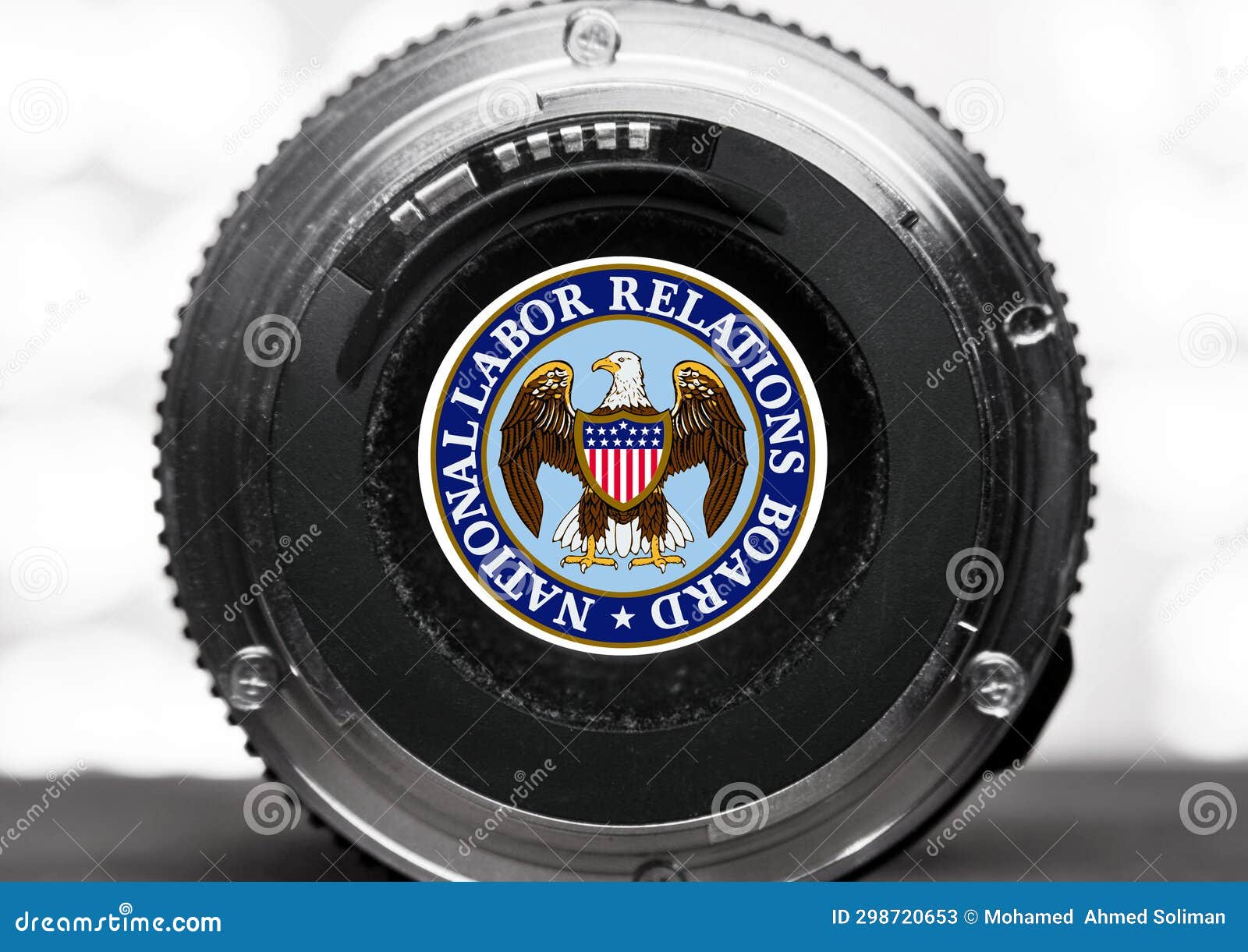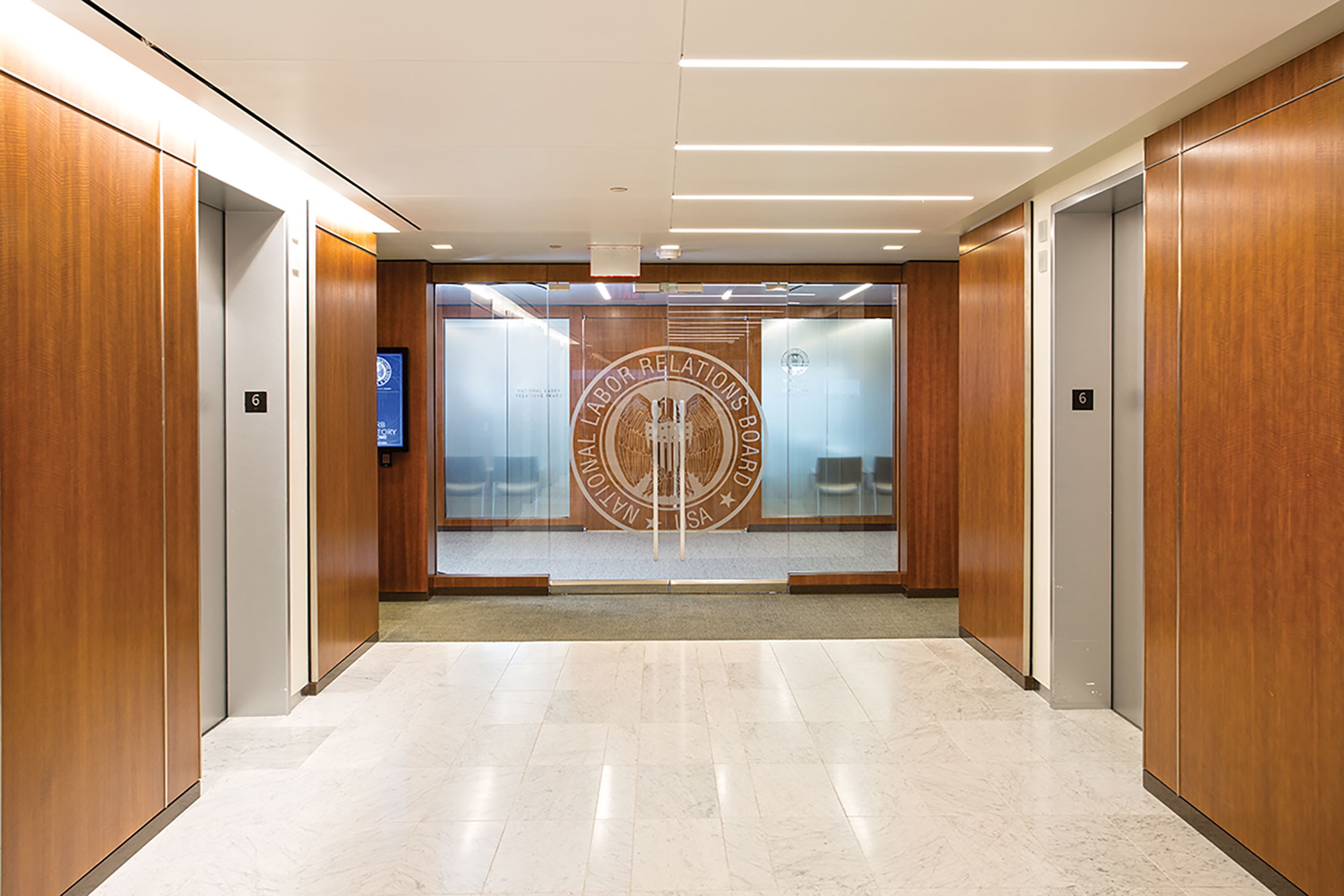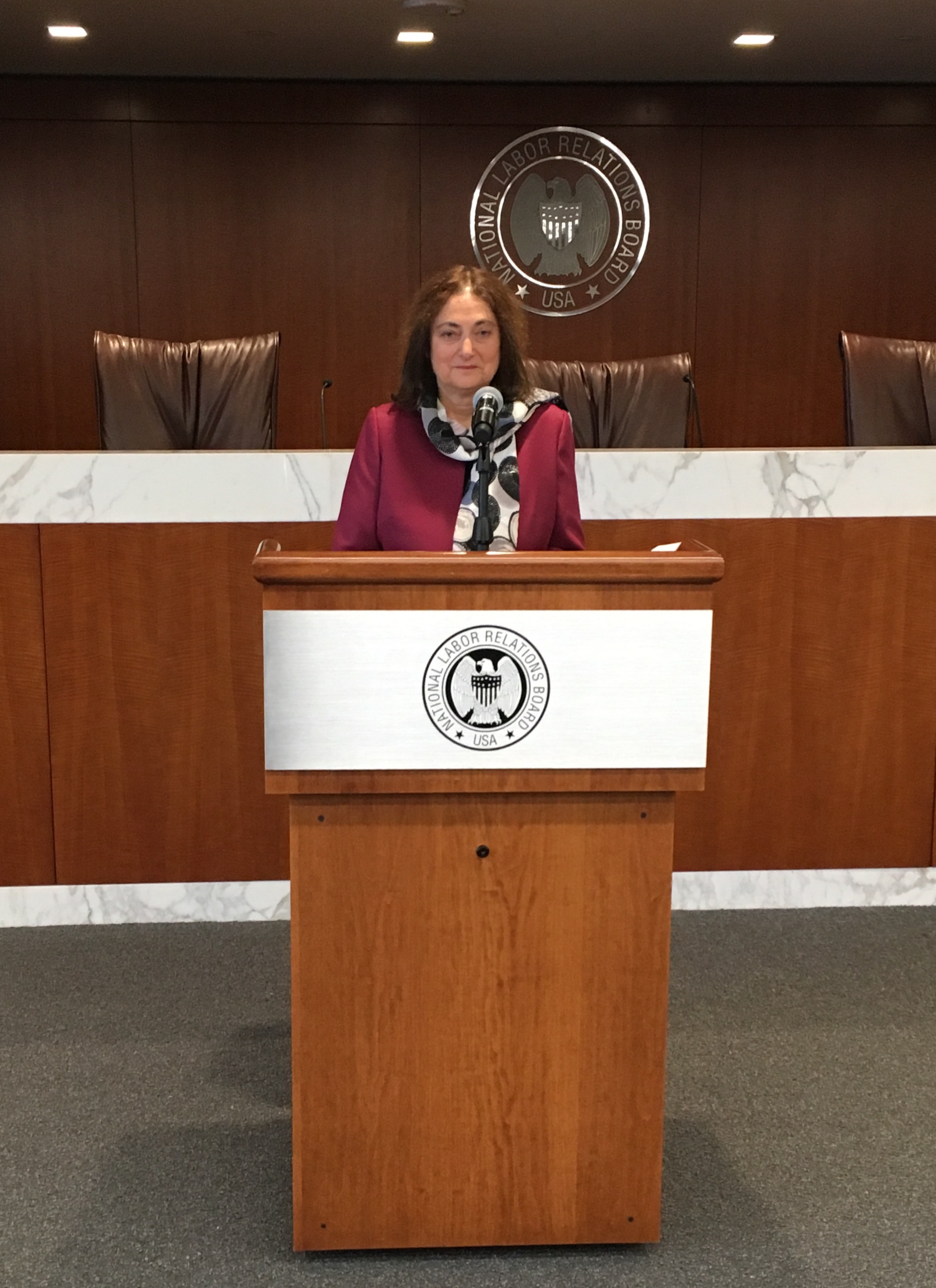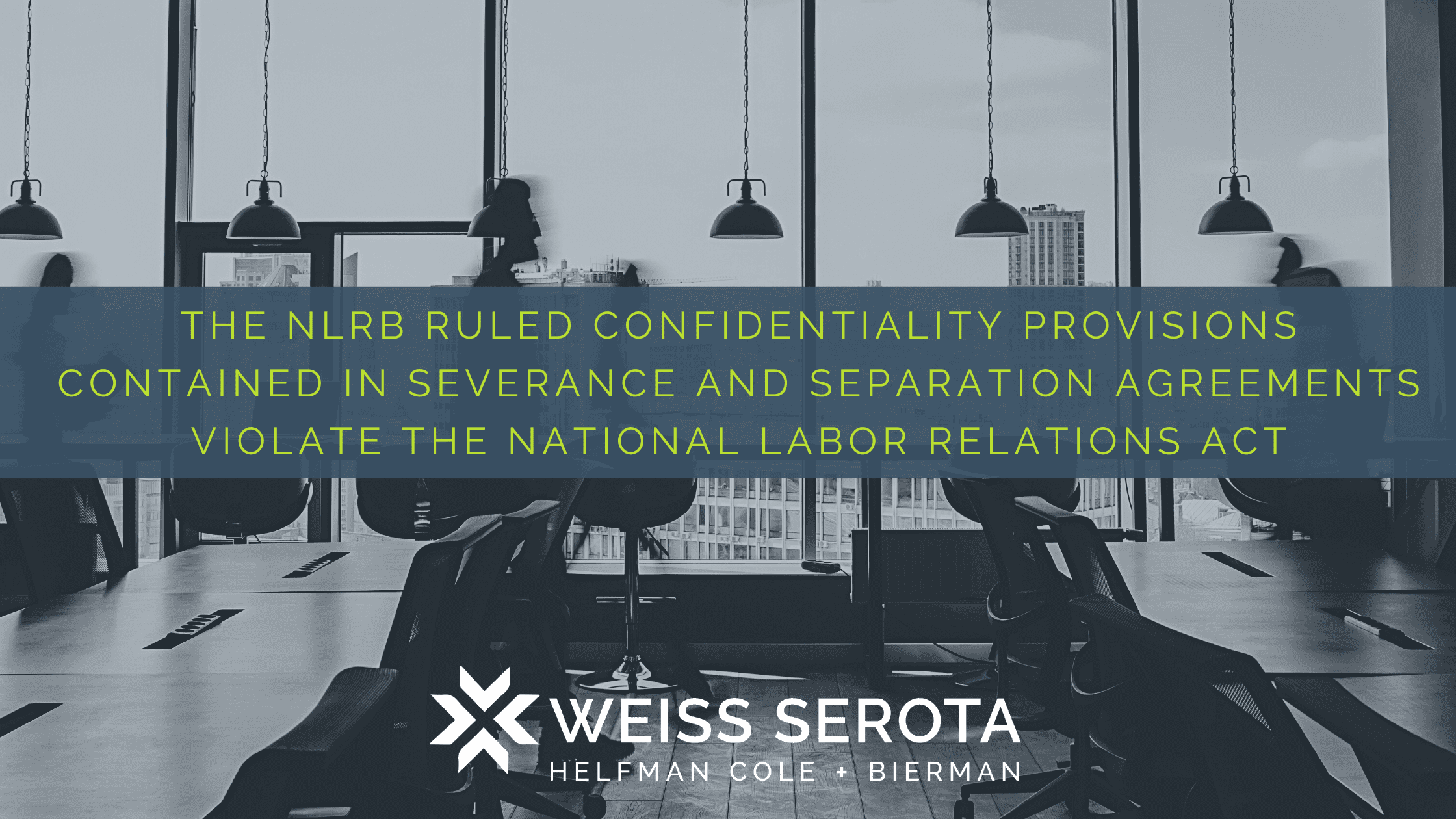Unveiling The National Labor Relations Board (NLRB): A Comprehensive Guide
Unveiling The National Labor Relations Board (NLRB): A Comprehensive Guide. Curious about the recent developments with the NLRB? The NLRB has been at the forefront of some of the most important labor law issues today.
Editor's Notes: "Unveiling The National Labor Relations Board (NLRB): A Comprehensive Guide" have published on 23 September, 2022. The National Labor Relations Board (NLRB) has a long and storied history, and its decisions have had a profound impact on the lives of millions of American workers.
We have done some analysis, digging information, made a Unveiling The National Labor Relations Board (NLRB): A Comprehensive Guide guide to help you make the right decision.

American National Labor Relations Board (NLRB) Editorial Stock Photo - Source www.dreamstime.com
Key Differences
| NLRB Prior to August 2022 | NLRB After August 2022 |
|---|---|
| General Counsel Jennifer Abruzzo issued a string of pro-union advice memoranda that sought to overturn decades of precedent. | new General Counsel Peter Robb has rescinded many of Abruzzo's memos. |
| The Board was divided 3-2, with the Democrats holding a majority. | The Board is now split 2-2, with the Democrats and Republicans each having two members. |
Transition to main article topics
FAQ
This comprehensive FAQ section provides answers to some of the most common questions surrounding the National Labor Relations Board (NLRB). These questions aim to clarify the NLRB's role, functions, and procedures. We hope this information proves helpful in your understanding of the organization.
Question 1: What is the primary responsibility of the NLRB?
The NLRB's fundamental duty is to enforce the National Labor Relations Act (NLRA). This involves safeguarding the rights of employees and employers to engage in collective bargaining and resolving disputes related to unfair labor practices committed by either party.
Question 2: What constitutes unfair labor practices for employees?
The NLRA identifies specific actions by employees that constitute unfair labor practices. These include engaging in strikes or boycotts for unlawful purposes, refusing to bargain collectively in good faith, and coercing or restraining fellow employees from exercising their rights under the NLRA.
Question 3: What types of unfair labor practices can employers engage in?
The NLRB recognizes a range of prohibited activities by employers, including interfering with or coercing employees during union organizing efforts, discriminating against employees based on their union membership or protected activities, and refusing to bargain in good faith with a labor organization.

national labor relations nlrb logo - Employee or Independent Contractor? - Source www.nathansgibson.org
Question 4: How does the NLRB handle complaints of unfair labor practices?
Individuals or organizations can file unfair labor practice charges with the NLRB's regional offices. Upon investigating the allegations, the NLRB may issue a complaint and seek a resolution through settlement or litigation before an administrative law judge.
Question 5: What are the potential outcomes of an NLRB investigation?
Depending on the outcome of the investigation, the NLRB may dismiss the complaint, issue a cease-and-desist order directing the party to end the unlawful practices, or impose other appropriate remedies to restore the balance of power and protect employee rights.
Question 6: How can I stay informed about current NLRB activities and rulings?
The NLRB website provides access to press releases, decisions, and other resources that keep the public informed about the Board's latest actions and precedents. Additionally, subscribing to the NLRB's social media channels or email updates ensures timely notifications of significant developments.
This concludes our FAQ section on the NLRB. We hope you have found this information helpful. For further assistance, please visit the NLRB website or contact the nearest regional office.
Next Article: Exploring the Role of the NLRB in Union Elections
Tips
Employers engaged in organizing activities need to be cognizant of the NLRB's role in overseeing labor relations. By understanding the NLRB's structure, jurisdiction, and processes, employers can mitigate risks and foster harmonious labor relations. Here are some key tips to navigate effectively through NLRB proceedings:
Tip 1: Understand the Authority and Jurisdiction of the NLRB
The NLRB's jurisdiction extends to private-sector employers engaged in interstate commerce, as well as certain non-profit organizations. Understanding the scope of the NLRB's authority is crucial to determining the applicability of labor laws to an organization.
Tip 2: Recognize Protected Activities and Unfair Labor Practices
Employees have certain protected rights under the NLRA, including the right to organize, bargain collectively, and engage in concerted activities. Employers should familiarize themselves with these protected activities and avoid engaging in unfair labor practices, such as interfering with union organizing or discriminating against employees for engaging in protected activities.
Tip 3: Respond Appropriately to Union Organizing Efforts
When faced with union organizing efforts, employers should respond in a neutral and respectful manner. Avoid anti-union campaigns or coercive tactics, which could result in unfair labor practice charges. Instead, employers should provide accurate information about the unionization process and respect employees' rights to make informed decisions.
Tip 4: Negotiate in Good Faith
If a union is certified as the exclusive bargaining representative for a group of employees, employers are obligated to bargain in good faith with the union over terms and conditions of employment. By engaging in meaningful negotiations and demonstrating a willingness to compromise, employers can foster a constructive relationship with the union and avoid potential conflicts.
Tip 5: Comply with NLRB Orders and Seek Legal Counsel When Necessary
Employers found to have violated the NLRA may be subject to remedial orders issued by the NLRB. These orders often require employers to reinstate employees, make back payments, or cease and desist from unfair labor practices. Employers should promptly comply with NLRB orders and, if necessary, seek legal counsel to ensure compliance and mitigate risks.
By following these tips, employers can navigate NLRB proceedings effectively and foster positive labor relations. For a more comprehensive understanding of the NLRB, refer to Unveiling The National Labor Relations Board (NLRB): A Comprehensive Guide.
Unveiling The National Labor Relations Board (NLRB): A Comprehensive Guide
The National Labor Relations Board (NLRB) plays a crucial role in labor relations, safeguarding the rights of both employees and employers. To fully understand this pivotal organization, it's essential to explore six key aspects:
- History and Origins: A timeline of the NLRB's establishment and evolution.
- Jurisdiction and Powers: The scope of the NLRB's authority and its enforcement mechanisms.
- Union Representation: The process for employees to form or join unions and the NLRB's role in overseeing elections.
- Unfair Labor Practices: Prohibited actions by employers and unions, as defined by the NLRB.
- Collective Bargaining: The NLRB's facilitation of negotiations between employers and unions.
- Remedies and Enforcement: The actions the NLRB can take to address violations of labor laws.

National Labor Relations Board (NLRB) at 1015 Half Street: Washington - Source www.wdgarch.com
These aspects provide a comprehensive framework for comprehending the NLRB's multifaceted role. The board's enforcement of unfair labor practices, such as employer retaliation or union coercion, ensures fair labor practices. Its oversight of collective bargaining promotes harmonious labor relations. Furthermore, the NLRB's remedies, including cease-and-desist orders and back pay awards, serve as powerful deterrents against violations of labor laws.
An authoritative guide, "Unveiling The National Labor Relations Board (NLRB): A Comprehensive Guide," has been published today. This guide empowers individuals to understand the National Labor Relations Board (NLRB) and its critical role in upholding the rights of employees and employers alike.
Editor's Notes: Unveiling The National Labor Relations Board (NLRB): A Comprehensive Guide has been developed to cater to the increasing need for a better understanding of the NLRB, its functions, and the implications for the American workforce.
Our team of experts has diligently analyzed and compiled information to create this comprehensive guide. Rest assured, this resource will equip you with the necessary knowledge to navigate the complex landscape of labor relations.
Key Differences:
| Employees | Employers |
|---|---|
| Right to organize and bargain collectively | Right to free speech regarding union activity |
| Right to strike | Right to hire and fire employees (with exceptions) |
Main Article Topics:
FAQs
This comprehensive guide to the National Labor Relations Board (NLRB) addresses frequently asked questions that arise regarding its role and responsibilities. The following FAQs provide insightful answers to common queries, fostering a deeper understanding of the NLRB's function in safeguarding labor rights.

Melissa Olivero: National Labor Relations Board - 2Civility - Source www.2civility.org
1. What is the primary purpose of the NLRB?
The NLRB's mission is to enforce the National Labor Relations Act (NLRA), which protects the rights of employees to organize unions, engage in collective bargaining, and participate in other concerted activities.
2. What types of unfair labor practices does the NLRB prevent?
The NLRB prohibits employers from engaging in unfair labor practices that interfere with employees' rights, such as retaliating against union organizers, refusing to bargain collectively, or discriminating based on union membership.
3. How does the NLRB handle complaints of unfair labor practices?
Individuals or organizations can file charges alleging unfair labor practices with the NLRB. The NLRB investigates the allegations and, if substantiated, may issue complaints against the accused party.
4. What are the possible outcomes of an NLRB complaint?
If the NLRB finds merit in a complaint, it may issue cease-and-desist orders, order reinstatement of employees, or require back pay and other remedies to rectify the unfair labor practice.
5. What are the employer's obligations under the NLRB?
Employers subject to the NLRA must respect their employees' right to organize, refrain from retaliating against union activities, and bargain in good faith with their union.
6. What are the exceptions to the NLRB's jurisdiction?
The NLRB's authority does not extend to certain types of employees, such as agricultural workers, supervisors, and independent contractors, nor does it apply to employers that are not engaged in interstate commerce.
By delving into these FAQs, readers gain valuable insights into the NLRB's role in upholding labor rights and ensuring a fair and equitable workplace for all.
Continue reading this comprehensive guide to explore further aspects of the National Labor Relations Board.
Tips
For comprehensive guidance on navigating labor relations complexities, refer to Unveiling The National Labor Relations Board (NLRB): A Comprehensive Guide.
Tip 1: Stay Informed
Familiarize yourself with the NLRB's role, jurisdiction, and key principles to make informed decisions.
Tip 2: Ensure Fair Treatment
Respect employees' rights to organize, bargain collectively, and engage in protected activities to foster a harmonious work environment.
Tip 3: Seek Representation
If involved in NLRB proceedings, consider seeking legal counsel from experienced attorneys to ensure the protection of your rights and interests.
Tip 4: Engage in Meaningful Bargaining
Approach collective bargaining with a genuine desire to reach mutually acceptable agreements that promote labor stability.
Tip 5: Adhere to NLRB Protocols
Comply with NLRB regulations and procedures to avoid potential violations and ensure fair and impartial proceedings.
By implementing these tips, organizations can navigate NLRB matters effectively, maintain positive labor relations, and foster a productive workplace.
Unveiling The National Labor Relations Board (NLRB): A Comprehensive Guide
The National Labor Relations Board (NLRB) is an independent federal agency tasked with enforcing U.S. labor law to protect the rights of employees and employers. Understanding its multifaceted role necessitates exploring its essential aspects:
- Adjudication: Resolving unfair labor practice charges filed by employees or employers.
- Enforcement: Ensuring compliance with labor law through injunctions or other remedies.
- Representation: Conducting union representation elections to determine bargaining unit.
- Oversight: Monitoring labor-management relations and providing guidance.
- Mediation: Facilitating resolution of labor disputes through mediation services.
- Education: Disseminating information on labor rights and responsibilities.
These aspects highlight the NLRB's vital role in fostering a fair and balanced labor relations environment. Its adjudication process ensures resolution of disputes, while its enforcement powers guarantee compliance with the law. The NLRB's role in representation and oversight promotes transparency and accountability, fostering healthy labor-management dynamics. Mediation services facilitate amicable dispute resolution, and education programs empower individuals with labor-related knowledge.

National Labor Relations Board » Stolen Legacy - Source www.stolenlegacy.com
Wondering what lies behind the scenes of the National Labor Relations Board (NLRB)? Unveiling The National Labor Relations Board (NLRB): A Comprehensive Guide is the ultimate handbook to understanding the NLRB’s crucial role in regulating labor relations in the United States.
Through rigorous analysis and meticulous research, we have crafted Unveiling The National Labor Relations Board (NLRB): A Comprehensive Guide to empower individuals, organizations, and practitioners with the knowledge they need to navigate the complexities of labor relations.
| Unveiling The National Labor Relations Board (NLRB): A Comprehensive Guide | |
|---|---|
| Purpose: | Provide in-depth understanding of the NLRB and its functions |
| Target Audience: | Individuals, organizations, and practitioners involved in labor relations |
| Format: | Comprehensive guidebook covering all aspects of the NLRB |
| Value: | Empowers readers to make informed decisions and navigate the complexities of labor relations |
Unveiling The National Labor Relations Board (NLRB): A Comprehensive Guide explores the following topics:
- NLRB's history, structure, and authority
- Rights of employees and employers under the National Labor Relations Act
- Unfair labor practices and how to address them
- The process of unionization and collective bargaining
- The role of NLRB in resolving labor disputes and enforcing the law
Whether you are an employer, an employee, a union representative, or simply interested in the field of labor relations, Unveiling The National Labor Relations Board (NLRB): A Comprehensive Guide is an indispensable resource.
FAQ
This comprehensive guide addresses frequently asked questions and misconceptions about the National Labor Relations Board (NLRB).
Question 1: What is the primary role of the NLRB?
Answer: The NLRB enforces the National Labor Relations Act, which protects employees' rights to organize and bargain collectively.
Question 2: Who can file a complaint with the NLRB?
Answer: Employees, unions, and employers may file complaints alleging unfair labor practices.
Question 3: What are some common unfair labor practices?
Answer: Examples include interfering with employee organizing, discriminating against employees for union activity, and refusing to bargain in good faith.
Question 4: How does the NLRB resolve complaints?
Answer: The NLRB investigates complaints and may issue complaints, conduct hearings, and order remedies such as reinstatement or back pay.
Question 5: How does the NLRB determine if a union has majority support among employees?
Answer: Typically through secret-ballot elections held by the NLRB.
Question 6: Are there any limitations on the NLRB's authority?
Answer: Yes, the NLRB does not regulate public-sector employees, agricultural workers, or certain managerial and supervisory employees.
Tips
Unveiling The National Labor Relations Board (NLRB): A Comprehensive Guide provides valuable insights into the organization's structure, responsibilities, and significance. To enhance understanding, consider these essential tips:
Tip 1: Understanding the NLRB's Jurisdiction
The NLRB's authority is limited to private-sector employers engaged in interstate commerce or affecting interstate commerce. Identifying the specific industries and businesses that fall under this jurisdiction is crucial.
Tip 2: Recognizing Protected Activities
The National Labor Relations Act (NLRA) protects employees' rights to organize, bargain collectively, and engage in concerted activities related to working conditions. Understanding the scope of these protected activities empowers employees and employers alike.
Tip 3: Distinguishing Unfair Labor Practices
The NLRB prohibits unfair labor practices by both employers and unions. Familiarizing oneself with the specific actions that constitute unfair practices enables timely reporting and resolution.
Summary:
By incorporating these tips, individuals can develop a comprehensive understanding of the NLRB's role in safeguarding the rights of employees and employers. This knowledge empowers effective participation in labor relations matters and fosters a harmonious workplace environment.
Unveiling The National Labor Relations Board (NLRB): A Comprehensive Guide
The National Labor Relations Board (NLRB) serves as an essential body in safeguarding labor rights and industrial harmony. This guide delves into the core aspects of the NLRB, providing a comprehensive understanding of its functions and significance.
- Legal Framework: The board's authority stems from the National Labor Relations Act.
- Union Representation: NLRB oversees elections to determine workers' union representation, fostering collective bargaining.
- Unfair Labor Practices: It investigates and adjudicates unfair labor practices committed by employers or unions.
- Dispute Resolution: NLRB facilitates dispute resolution through mediation and arbitration, promoting workplace harmony.
- Enforcement Mechanisms: The board can issue cease-and-desist orders, reinstate employees, and award back pay to enforce labor laws.
- Case Precedents: NLRB's decisions establish case precedents that shape labor relations practices and policies.
These aspects collectively highlight the NLRB's critical role in upholding workplace rights, balancing employer and employee interests, and ensuring a fair and equitable labor environment. Its function as an impartial mediator and enforcer of labor laws contributes to the maintenance of harmonious and productive labor relations in the economy.

NLRB Ruled Severance Agreements Provisions Violate National Labor - Source www.wsh-law.com
Unveiling The National Labor Relations Board (NLRB): A Comprehensive Guide
The National Labor Relations Board (NLRB) plays a vital role in safeguarding the rights of employees and employers in the United States. Established under the National Labor Relations Act of 1935, the NLRB is responsible for enforcing federal labor law and ensuring fair labor practices.

National Labor Relations Board (NLRB) at 1015 Half Street: Washington - Source www.wdgarch.com
This comprehensive guide provides an in-depth look at the NLRB, its structure, functions, and impact on the labor landscape. It explores the Board's role in facilitating collective bargaining, protecting the rights of workers to organize and engage in union activities, and preventing unfair labor practices. Understanding the NLRB is crucial for employers and employees alike, as it helps them navigate the complex legal framework surrounding labor relations.
The guide also examines the practical applications of NLRB decisions and the challenges faced by the Board in adapting to evolving labor practices. By delving into real-life cases and examples, it illustrates the NLRB's impact on industries and the protection it provides to both employees and employers.
This guide serves as an invaluable resource for anyone seeking a comprehensive understanding of the National Labor Relations Board and its significance in the American labor market.
Conclusion
The National Labor Relations Board (NLRB) remains a cornerstone of fair labor practices in the United States. Its role in safeguarding employee rights, facilitating collective bargaining, and preventing unfair labor practices is vital for a balanced and just labor market. Understanding the NLRB's structure, functions, and impact empowers both employers and employees to navigate the complexities of labor relations.
As the labor landscape continues to evolve, the NLRB will continue to play a critical role in ensuring a fair and equitable workplace for all.
The Forbidden Breast Milk In Brazil: Exploring Cultural Attitudes And Legal Implications, Today's Date: The Ultimate Guide To Current Time And Events, Jalen Carter: NFL Draft Profile Of A Generational Defensive Force, Hideaki Nishino: The Innovative Japanese Football Manager, Unveiling The Truth With Mark Levin: Hard-Hitting Commentary And Conservative Insights, Unravel The Clues: Crack The Nyt Connections Hints For January 24, X Games 2025: Pushing The Limits Of Extreme Sports, Pandas In Real-Time: Experiencing The Wonders Of Chengdu Research Base, Unveiling The Truth: Tucker Carlson's Investigative Journalism Exposing Hidden Agendas, Vivid Seats: Official Ticket Marketplace For Top Events And Live Entertainment,